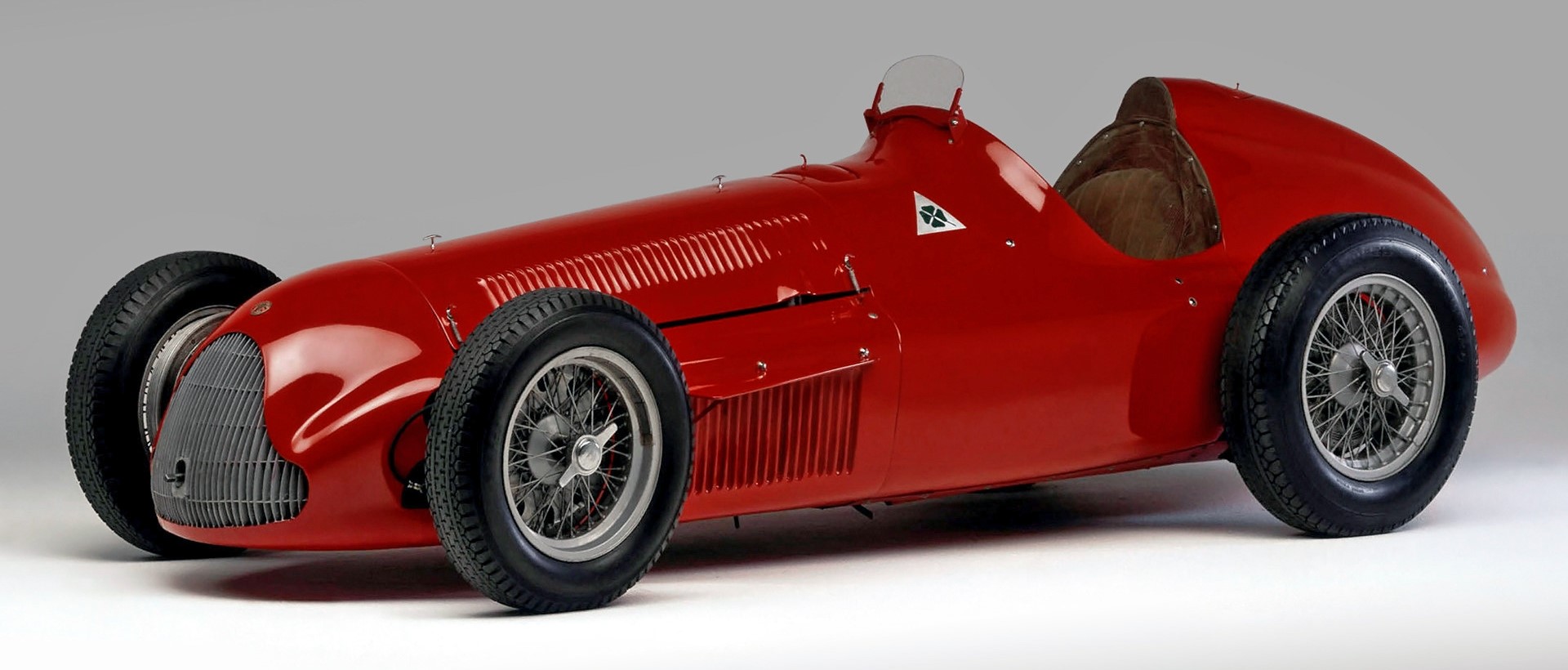
1951 Alfa Romeo Tipo 159 Alfetta
The Alfa Romeo Tipo 158 “Alfetta” opened the age of the modern motorsport, winning two F1 World Championships. The 158/159 Alfetta remains one of the most successful cars in the history of Formula One, having won every race it entered in 1950, and winning 4 out of 7 races (with a podium in all of the other 3) in 1951. Juan Manuel Fangio won the first of his five F1 World Championship titles in 1951 behind the wheel of the single-seater Alfa Romeo 159 Alfetta. An evolution of the 158, which claimed the first World Champion in 1950 in the hands of Giuseppe “Nino” Farina, the 159 adopts a more sophisticated De Dion rear axle, improved aerodynamics and an upgraded, straight-eight 1.5-litre engine with dual-stage supercharger which could produce a peak output of up to 450hp.
Gran Premio Tipo 159 “Alfetta” (1951)
Engine:……….in-line 8, 1479 cc, twin cam, two stage supercharger
Power:………..425 hp @ 9300 rpm (419 bhp)
Top speed:…..191 mph (305 kmph)
Bodywork:…..Assembled by Zagato
The “Alfetta” 159 was the winner of 1951 Formula 1 World Championship with Juan Manuel Fangio. Its gorgeous 425 hp in-line 8, 1.5 litre supercharged engine with “De Dion” rear suspension and a more efficient aerodynamic configuration were the main differences from the previous “158” (1950 F.1 World Champion with Giuseppe “Nino” Farina).
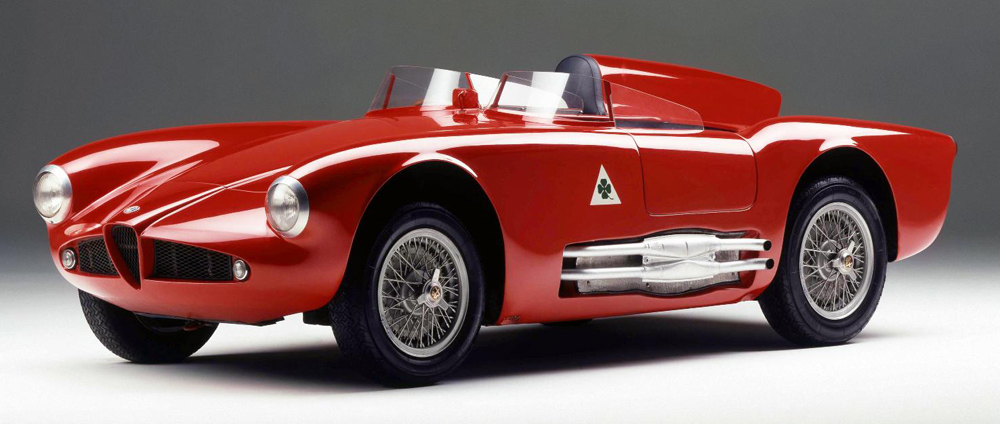
In 1955 the Giulietta twin-cam engine formed the basis for a barchetta-style sportscar designed to enter competitions in the 1500 cc Sports class. Abarth was tasked with tuning the engine and created the sheet metal chassis, while Boano developed the original bodywork.
The great transformations taking place at the Portello plant in the 1950s prompted Alfa Romeo to quit Formula 1 after winning the first two Drivers’ Championships. But despite this withdrawal, the Milanese automaker never lost the racing heritage in its DNA. While the 1900 and Giulietta epitomised the concept of the “family car that wins races” by beating off competition in the touring category, Alfa was secretly developing prototypes to compete in the sport category.
After the outlandish, futuristic 1900 C52—nicknamed the Disco Volante or “Flying Saucer”—came the 750 Competizione. Whereas the former was unique for its ogival cross-section body, the latter was equally unconventional compared with the prevailing Alfa Romeo cars of that period.
The 750 prototype (whose number did not refer to engine displacement, but was an in-house code representing the Giulietta) was actually developed in conjunction with Abarth, which tuned the engine, built the chassis and assigned trusted coachbuilder Boano to develop the original bodywork, which differed from the style of other Alfa cars of the time.
The characteristic three-lobed grille expressed the Alfa Romeo identity. but the barchetta harboured a host of new solutions, including the double exhaust on the left side and rear fins.
The 750 Competizione was a traditional, open two-seater sportscar with right-hand drive, but with a partition running down the middle of the cockpit, between the driver and passenger seats. Each occupant had separate plexiglass windshields connected to small side windows. Under the small left-hand door was an openable bay containing a pair of four-to-two exhaust mufflers. At the rear, two fins led to the small rear lights, while another fin higher up merged into the driver’s headrest.
Abarth, bucking the widespread trend of using tubular frames for racing cars, created a load-bearing body with steel sheets, plus classic features such as a front-mounted engine combined with rear-wheel drive, as well as independent suspension at the front and rigid axle suspension at the rear.
The twin-cam Giulietta Sprint engine was tuned up, boosting displacement to 1488 cc and adopting a dual ignition cylinder head, which increased power output to 145 hp at over 8000 rpm. The gearbox had five forward gears and the top speed exceeded 220 km/h.
Although the car was successfully tested and demonstrated good dynamic qualities, the project was abandoned because Alfa decided not to return to competitive racing. The 750 Competizione on show is therefore a unique example, which belongs to the FCA Heritage collection and resides in the Alfa Romeo Historical Museum in Arese.
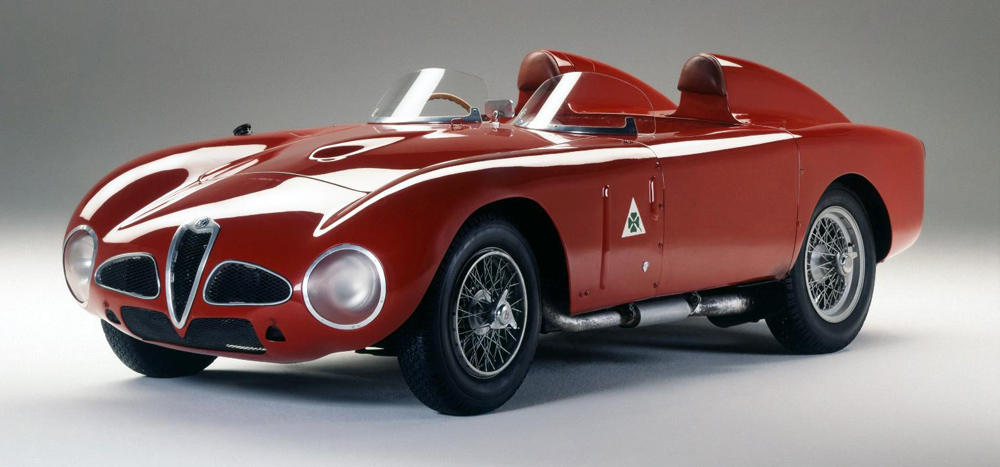
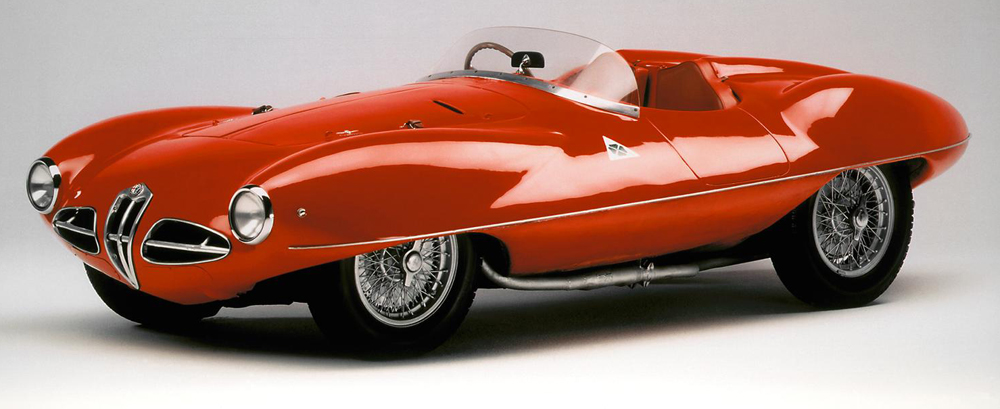
The Alfa Romeo 1900 C52 “Disco Volante” (‘flying saucer’) is a series of experimental sports racing cars produced between 1952 and 1953 by Italian car manufacturer Alfa Romeo in collaboration with Milanese coachbuilder Carrozzeria Touring. The car was distinguished by streamlined, wind tunnel tested bodywork.
Three spiders were made in 1952, with a 2-litre all-alloy four-cylinder engine; a year later one was modified into a coupé, and another one into a more conventional-looking spider. Two more examples were built fitted with a six-cylinder 3.5-litre engine from the Alfa Romeo 6C 3000 CM racing car. Four of the five cars built in total survive today.
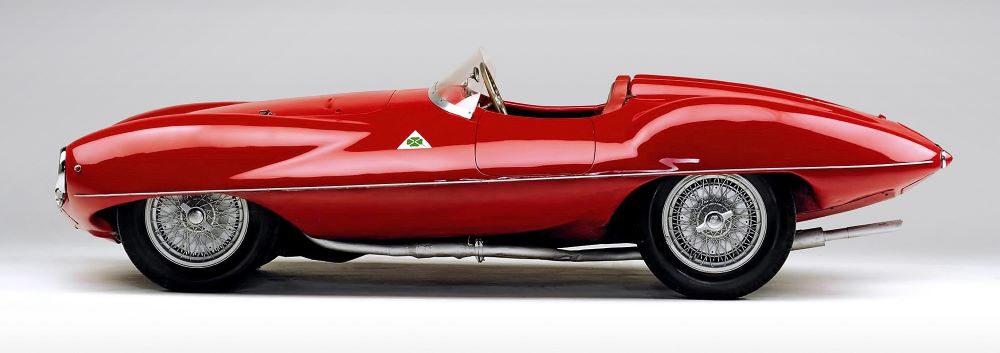

Alfa Romeo kicked off production of the 1900 in 1950, while the Alfetta was prepping for a two-year winning streak in F1. This was the groundwork for the creation of a Sports car prototype designed by Touring in 1952, which for its originality and flamboyant design would be known as the “Disco Volante” (Italian for “Flying Saucer”).
For the first time after the war, in the 1950s, Alfa Romeo returned to making cars with four-cylinder engines and, even more importantly, adopting the new industrial approach of mass production. It was the moment of the 1900, a car created to reach out to a broader clientele than the gorgeous 6C 2500, which would stay in production a little longer.
These were also the two years of undisputed victories in the fledgling Formula 1 World Championship with the Alfetta winning race after race and contributed to consolidating the worldwide prestige of the Italian auto maker in a major fashion. So the decision was taken to make a prototype for competing in the two-litre Sports car class.
The 1900 was the first Alfa Romeo with monocoque body shell chassis but a tubular steel chassis with side rails was made for the C52 for racing. The originality of the car which led to it being named “Disco Volante” was the bodywork styled by Touring. The unusual Spider had bulging wings over the wheels which joined seamlessly with the streamline low-slung line, making it look like a sort of spaceship, hence its name. In-depth aerodynamic studies also included the analysis of side currents for the first time.
The racing-worthy numbers of the aerodynamic Spider were impressive: 158 horsepower and just 735 kilograms of weight meant that the Alfa Romeo C52 Disco Volante had a top speed in excess of 220 km/h.
It was all built around the twin-cam engine of the 1900 Sprint, with light alloy crankcase and head, V arrangement, two chain-driven overhead camshafts and two double-barrel carburettors. Power was upped from 100 to 158 hp at 6500 rpm, as a result of raised peak rpm, slightly oversized bore, adjusted compression ratio from 7.7 to 8.7:1, and two double-barrel carburettors.
Longitudinal front engine, four-speed gearbox and rear-wheel drive. Independent quadrilateral transversal front suspension, coil springs and hydraulic shocks, rigid rear axle with upper triangle and lower struts, coil springs and hydraulic shocks. Its remarkably light weight of just 735 kilograms and very streamline aerodynamics propelled the 1900 C52 Disco Volante to a top speed in excess of 220 km/h.
Only five were made in total, namely a Spider, a Coupé, a slimmer “fianchi stretti” (narrow side) version with wings closer to the wheels and two Spiders with 6C 3000 mechanics, delivering 230 HP and clocking a top speed of 240 km/h.



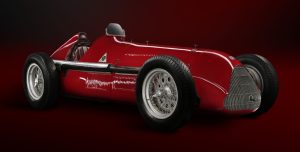
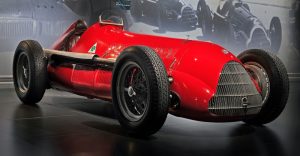
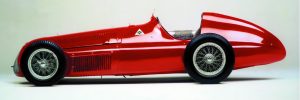
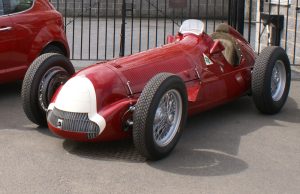
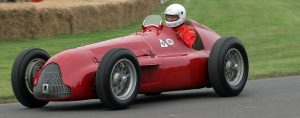
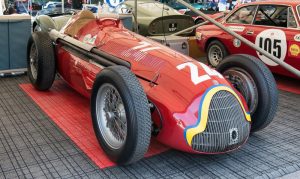
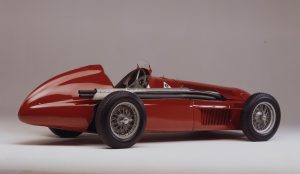
You must be logged in to post a comment.